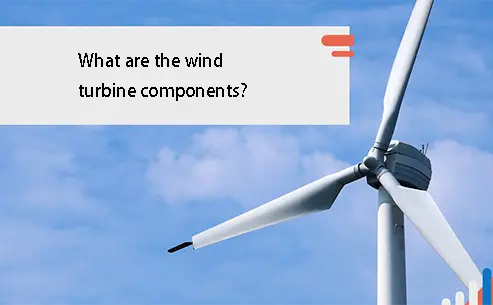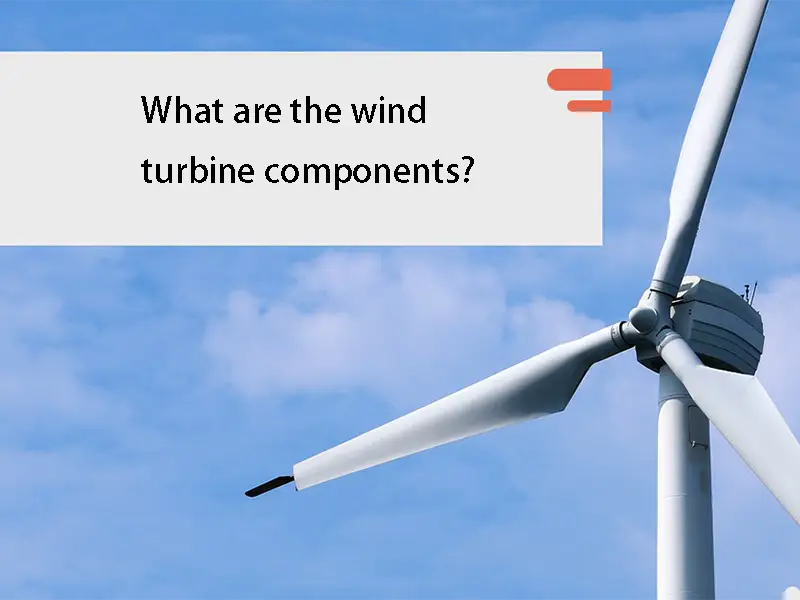
Main content:
- Wind turbine components: wind rotor blades
- Wind turbine components: gearbox
- Wind turbine components: secondary helical teeth
- Wind turbine components: helical gear and planetary gear structure
- Wind turbine components: generator
- Wind turbine components: electric passenger compensation device
- Wind turbine components: towers
- Wind Turbine Components: Conical Cylindrical Tower
- Wind Turbine Components: Truss Towers
- Wind turbine components: the connection between the tower and the foundation
- Wind turbine control system
When selecting wind turbine components, the manufacturer, origin and quality grade requirements of the wind turbine components should be fully considered. Otherwise, if the wind turbine components are damaged, it will be a big problem to repair them in the future.
1. Wind turbine components: wind rotor blades
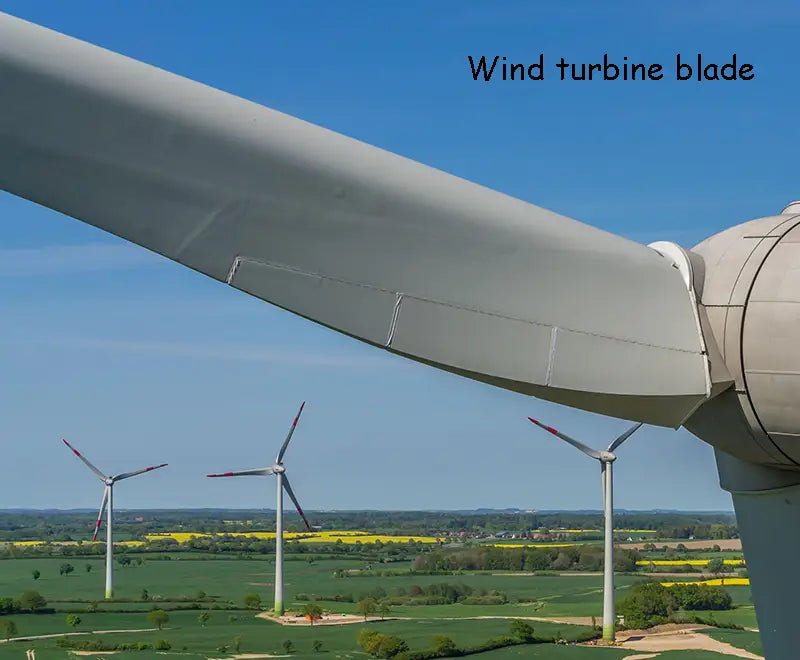
The blade is the most critical part of the wind turbine, and this wind turbine component is generally made of non-metallic materials. Unlike steam turbine blades, the blades in the wind turbine components are in a sealed shell, and its external operating conditions are very harsh. It has to withstand high temperature, snowstorms, lightning, salt fog, gusts, severe cold, sandstorms and other attacks. Due to the high altitude, during the rotation process, the blades in the wind turbine components are affected by gravity changes and airflow disturbances caused by terrain changes. Therefore, the force changes on the blades are very complex. This dynamic wind turbine The fatigue characteristics of the structural materials of the wind turbine components should be taken into consideration when selecting a wind turbine. When the wind speed reaches the rated wind speed of the wind turbine design, measures must be taken on the wind turbine components of the wind turbine to ensure that the output power of the wind turbine does not exceed the allowable value. There are two commonly used power adjustment methods, namely variable Pitch and stall adjustment.
1.1 Wind Turbine Components: Variable Pitch
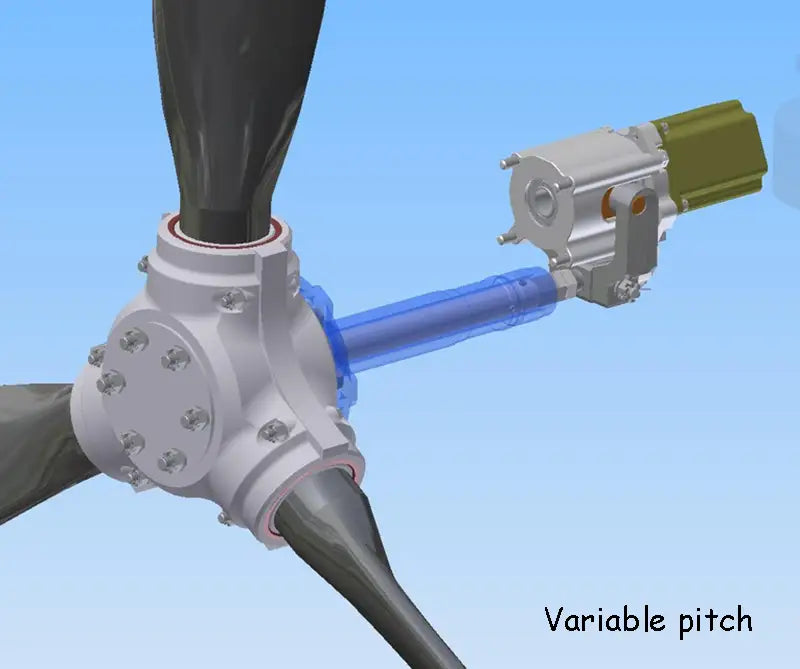
The variable distance wind turbine means that the entire blade rotates around the central axis of the blade, so that the angle of attack of the blade of the wind turbine component is changed within a certain range, so that the output power can be adjusted not to exceed the design allowable value. When the unit fails, it needs to be shut down urgently. Generally, the blades of the wind turbine components should be feathered first, so that the force on the unit structure is small, which can ensure the safe and reliable operation of the unit. In the wind turbine components, the variable pitch blades generally have small blade width, light blades, and the nose mass is smaller than that of the stall unit. It does not require a large brake and has good starting performance. The rated power can still be reached in the low air density area. After the rated wind speed, the output power can be kept relatively stable to ensure high power generation. In the variable pitch structure, the failure of the blade bearing is very difficult. Variable distance units are more suitable for operation in areas with low air density on the plateau, avoiding the problem of low power generation in summer and excessive power generation in winter when the installation angle of the stall machine is determined. The variable pitch unit is suitable for areas with more wind speeds above the rated wind speed, so that the increase in power generation is more significant, and the above characteristics should be considered when selecting the unit.
1.2 Wind turbine components: fixed pitch
To be precise, the fixed pitch should be a fixed pitch stall adjustment type, that is, the unit determines a pitch angle according to the local wind resources during installation, and installs the blades according to this angle. The angle of the blades of the wind turbine components of the wind turbine will not change during operation. Of course, if the power generation is significantly reduced or the power is often excessive, the blade angle can be adjusted at any time. Fixed-pitch wind turbines are generally equipped with a blade tip braking system. When the wind turbine needs to be shut down, the blade tip brakes of the wind turbine components are turned on. When the wind rotor of the wind turbine components is under the action of the blade tip brakes When the level is reached, the wind wheel is stopped by a mechanical car to stop it. Of course, there are very few wind turbines without tip brakes, but they require more expensive low-speed brakes to ensure the safe operation of the unit. The advantage of the fixed pitch stall type wind turbine is that the wheel hub and blade root parts of the wind turbine components have no structural moving parts, and the cost is low, so the control system does not need to set up a set of programs to judge and control the pitch control process. In the process of stalling, the power fluctuation is small; but this structure also has some inherent problems. In the design and manufacture of blades for wind turbine components, due to the wide fixed-pitch stall blades, the dynamic load of the unit increases, requiring a set of blade tip brakes , in areas where the air density varies greatly, the output power varies greatly in different seasons.
To sum up, the two power adjustment methods have their own advantages and disadvantages, and the applicable scope and region are different. When selecting wind turbines in wind farms, the characteristics of different units and local wind resources should be fully considered to ensure that the installed units are optimal. output effect.
2. Wind turbine components: gearbox
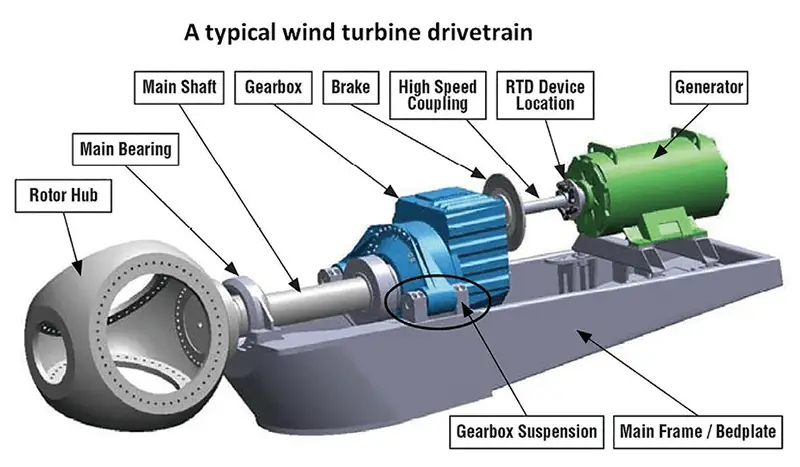
The gearbox of the wind turbine component is the bridge between the wind turbine and the generator. In order to reduce the use of more expensive gearboxes, the speed of the wind rotor should be increased and the speed-up ratio of the gearbox should be reduced. However, in practice, the number of blades is limited by the structure and cannot be too small. Considering the characteristics of structural balance, it is better to choose three blades. Better.
2.1 Wind turbine components: secondary helical teeth
This is one of the gear box structures often used in wind turbine components. The wind turbine components have a simple structure and can use general advanced gear boxes. Compared with specially designed gear boxes, the price can be reduced. In this configuration, there is a distance between the shafts, which is not coaxial with the generator shaft.
2.2 Wind turbine components: helical gear and planetary gear structure
Since the helical gear shafts of the wind turbine components have to be translated a certain distance, the nacelle becomes wider. The other structure is the planetary gear structure. The planetary gear has a compact structure and is less expensive than the helical gear with the same ratio. The efficiency is higher when the ratio is the same. In the variable-pitch unit, the penetration of the hydraulic shaft is often considered, so the use of two The first-stage planetary gear is added with a first-stage helical gear to increase the speed, so that the variable-pitch shaft passes through the center of the planetary wheel.
3. Wind turbine components: generator

There are the following types of generators in wind farms for selection of wind turbines:
(1) Asynchronous generator. (2) Synchronous generator.
(3) Double-fed asynchronous generator. (4) Low-speed permanent magnet generator.
4. Wind turbine components: electric passenger compensation device
Since the grid-connected asynchronous generators require reactive power compensation, if all of them are provided by the grid, it will undoubtedly be detrimental to the economic operation of the wind farm. Therefore, most wind turbines currently have capacitor compensation devices for wind turbine components. Generally, the capacitor banks of wind turbine components are composed of several capacitors of tens of thousands of Farads, and are divided into several grades according to the capacity of the wind turbine. Design how much to compensate for each level. Each stage of compensation cut-in and cut-out must be increased or decreased according to the generator power, so that the power factor approaches 1.
According to the above discussion, it can be seen that in the selection of wind turbines, the generator selection should consider the following principles:
(1) While considering high efficiency and high performance, the simplicity and high reliability of the wind turbine component structure should be fully considered;
(2) The quality, performance, brand, and price should be fully considered when selecting models, so as to reduce costs when the generator set is repaired when it is damaged and the generator set is localized.
5. Wind turbine components: towers
The tower of the wind turbine components mainly plays a supporting role in the wind turbine, and at the same time absorbs the vibration of the unit.
5.1 Wind Turbine Components: Conical Cylindrical Tower
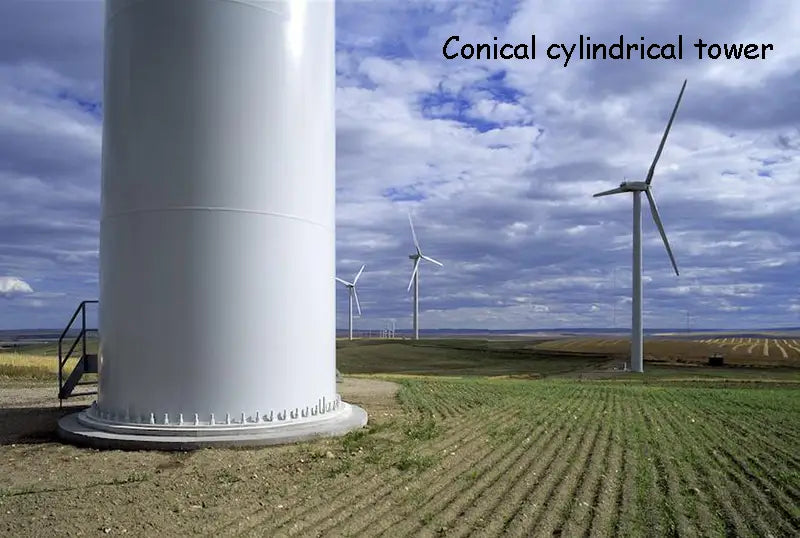
Most of the imported and domestic units adopt the simple tower structure of wind turbine components. The advantages of this type of wind turbine component structure are good rigidity, safety for people to climb the tower in winter, and the bolts and truss type of the connecting part of the wind turbine components. Compared with towers, there are much fewer towers, less maintenance work, and easy installation and adjustment. At present, China can produce towers by itself, and some of them have reached the international advanced level.
5.2 Wind Turbine Components: Truss Towers
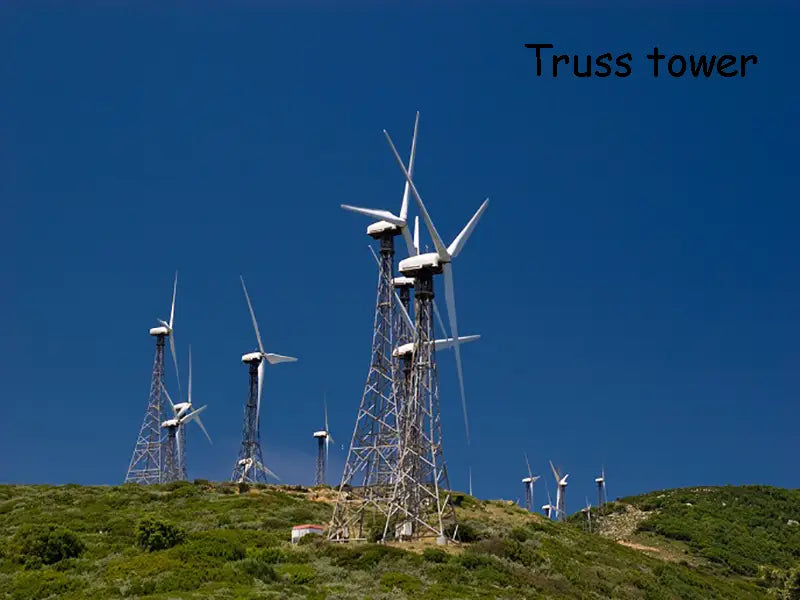
The truss type of wind turbine components adopts a structural form similar to a power tower. The wind resistance of the wind turbine component structure is small, which is convenient for transportation but complicated to assemble, and the bolts on the tower need to be fastened every year, and the workload is heavy. The conditions for climbing towers are bad in winter. The angle steel structure of 16Mn steel material is mostly used, and the bolts are mostly high-strength type. It is more suitable for the use of southern islands, especially in wind fields with strong wind and unstable wind direction. The truss tower can better absorb the operation of the unit. torque and vibration generated in the
5.3 Wind turbine components: the connection between the tower and the foundation
There are two main ways to connect the tower to the foundation: one is the anchor bolt; the other is the foundation ring. In addition to requiring good precision in the screw holes of the bottom flange of the tower, the anchor bolts also require high strength of the anchor bolts, good positioning in the foundation of the wind turbine components, and a hole between the bottom flange and the foundation. layer of expansive cement. The foundation ring needs to process a short section of the tower and requires good anti-corrosion to put it into the foundation. The bottom end of the tower and the foundation are directly flanged to the flange, which is easy to install.
The selection principle of the tower of the wind turbine components should fully consider the characteristics of beautiful appearance, good rigidity, easy maintenance, and good conditions for climbing the tower in winter. Of course, in a specific environment, issues such as transportation and price should also be considered.
6. Wind turbine control system
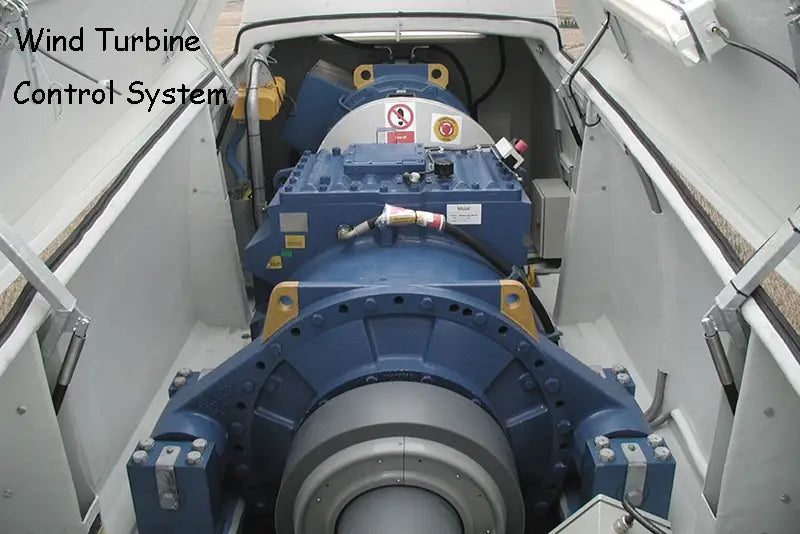
6.1 Control system
The general functions and requirements of the control system of the wind turbine components are to ensure the safe and reliable operation of the unit. By testing the status and data of each part, we can judge whether the whole system is in good condition, and through the display and remote transmission data, all kinds of information of the unit can be reported to the operator in a timely and accurate manner to help the operator observe the situation and diagnose the cause of the failure. Record power generation data, implement remote reset, and start and stop groups.
The functions of the control system of the wind turbine components include: operation function, protection function, recording data, display function, control function and test function.
The control system of wind turbine components requires reliable computer operation, strong anti-interference ability, convenient and reliable software operation; the control system is concise, easy to check, its drawings are clear, easy to understand and check, and easy to operate.
6.2 Remote control system
The remote transmission control system refers to the data exchange from the wind turbine to the main control room and anywhere in the world. The remote monitoring interface has exactly the same monitoring and operation functions as the real-time status of the wind turbine and the display of the on-site controller. The remote transmission system is mainly composed of the communication board in the upper computer, the communication program, the communication line, the lower computer, the Modem and the remote control program. The remote control system should be able to control as many units as possible, and try to make the remote control screen consistent with the main control screen, with good display speed and stable communication quality. The remote control program should be reliable, user-friendly and easy to operate. The communication system should be equipped with lightning protection system. It has the function of supporting file output and printing. Has a chart generation system to display power curves.
Read more: Various wind turbines structure


